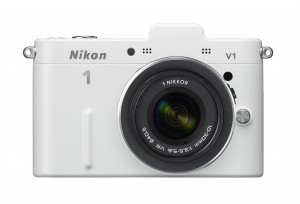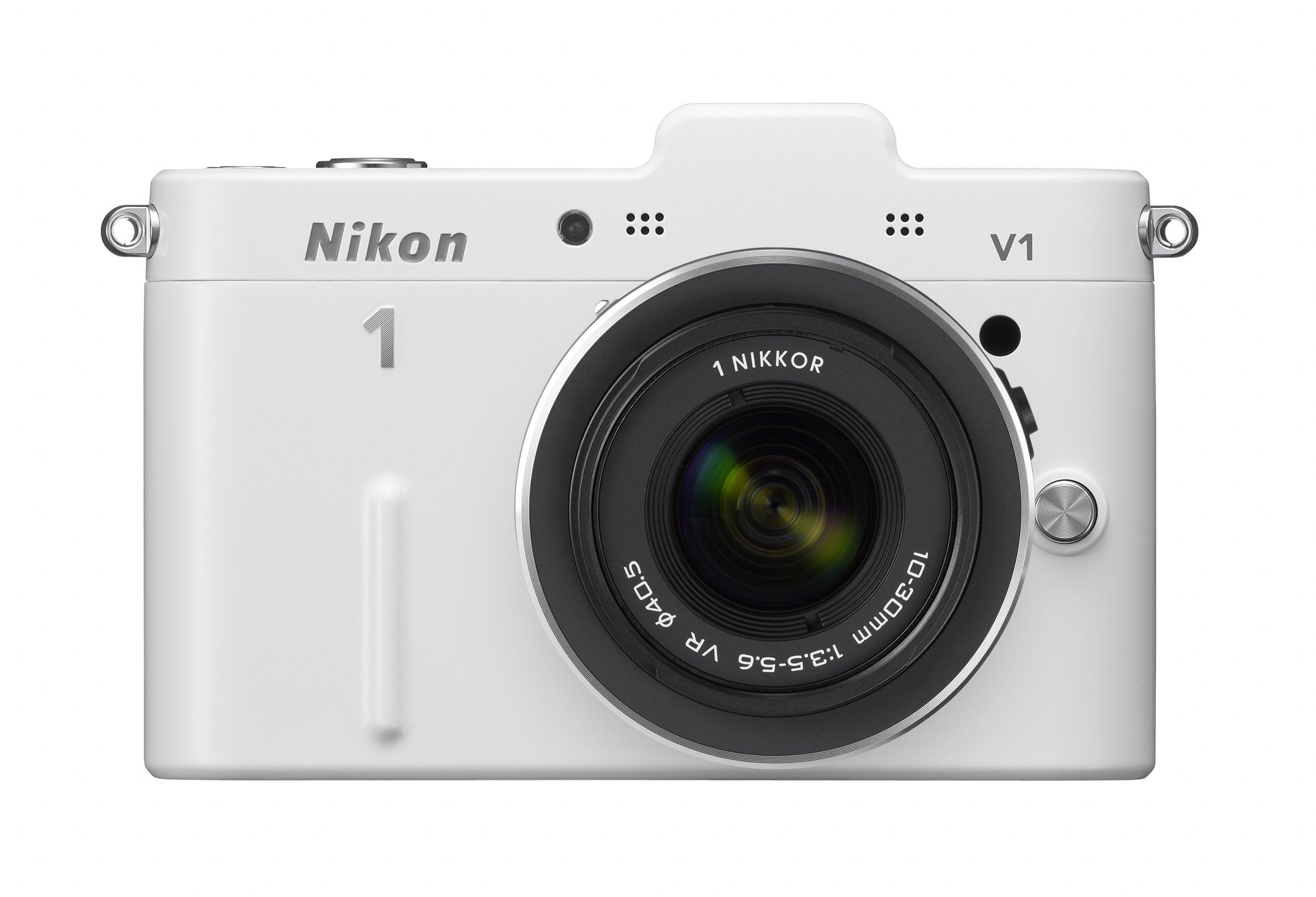Nikon recently introduced two new compact style cameras into the market. Under the generic banner of Nikon 1 they brought into the fray the Nikon J1 and the Nikon V1, a pair of smaller cameras offering mirrorless technology using interchangeable lenses.
These are two all new cameras, and by all new, I mean exactly that. We have a new sensor and sensor size, offering a 2.7 crop factor. We have a new lens mount, somewhat smaller than the legendary Nikon F-Mount that’s been around for well over 50 years. We have a new compact body size, smaller than any of their DSLR bodies, making for a potentially very pocketable camera.

Nikon Australia kindly provided us with a V1, and that is the subject of this review.
Let’s start by explaining a bit of the technology, first. As I noted above, this camera features interchangeable lens technology, but in a mirrorless configuration. There’s nothing new about interchangeable lens technology in cameras, and photography has, for about as long as it’s been around, enjoyed the flexibility that choosing a lens to match the task at hand offers.
In the more recent past, single lens reflex (SLR) cameras have offered a variety of inexpensive kit lenses that permit almost anyone with a camera to call themselves a photographer. While it takes more than just a camera and a lens to make a good image, for most intents and purposes, the quality that we can extract from today’s photographic equipment is exceptionally good. The tools are very sophisticated.
What is MILC?
The “R” in SLR means “Reflex”, and it’s a reference to the fact that SLR cameras include a mirror box assembly that lets you compose your image by looking, via the mirror, through the lens that’s going to be taking the photo. Over the last few years we have seen the development of “live view” technology, which places a live sensor into the light path (often the same sensor that may be making the image) and uses images rendered via that live sensor instead of a reflected image via the mirror box in a SLR.
This is what is called “mirrorless”, and by employing this technology, camera makers can make their cameras smaller and lighter, and as a consequence, they can also make their lenses smaller and lighter.
For those of us who are getting a bit older and don’t want to carry a lot of heavy equipment around, the idea of lighter cameras and lenses is an attractive one. But I don’t want that to come at the expense of image quality. Yes, I want to eat my cake, but still have it, thank you very much.
So, in the race to build cameras that are lighter but produce images of a very high quality, using many of the techniques that are used in the SLR field, manufacturers are now making MILCs – Mirrorless Interchangeable Lens Cameras. Cameras like the Sony NEX3 and 5, and Olympus EP-3 Pen are fine examples of MILCs, and the Nikon V1 is now in that market place as well.
So, how does it stack up?
First of all, and let’s talk about first impressions, this is a very solid little camera. That was my first impression, and several months on, this remains the case. Build quality, in terms of the body, as well as for the lenses, is exceptional. Everything has a good solid feel, and there is nothing that feels plasticky or that it’s going to fall off.
Electronic Viewfinder
In use, the camera offers two viewfinder options. As with many compact cameras, there is the big LCD screen on the rear of the camera body. There is also an electronic eye level viewfinder locaqted immediately above the big LCD screen. There’s a micro switch sensor that detects when you are placing the camera up to your eye, and automatically switches between the rear LCD and the eye level finder. Switchover speed is acceptable; I’m used to an optical finder – which is very fast – and the changeover to electronic viewfinders is something that I’m going to have to get used to, I expect.
I did find that the automatic switchover sensor was a bit too sensitive though – I may have been doing stuff on the back of the camera, and it seemed to switch in and out even though I wasn’t actually putting the camera up to my eye.
Much of the camera’s functionality is controlled through menu options, and I think that this is a minor weakness in the camera’s design. many settings should be easily accessible using buttons on the camera body, but this is not the case here, and that slows one down in their use of the camera.
And the camera’s shooting mode button, located on the back of the camera, is too easily upset. I might have the camera in still image mode, and place it in my camera bag for a few moments. Upon removing the camera from the bag, I might find that it’s been placed into some other mode: movie, perhaps – and as a result, I’m getting erroneous settings on the screen.
Easy to fix by just reverting the dial to where it should have been, but that’s exactly the point: “where it should have been”. The dial’s setting simply should have been permitted to change in this manner.
New Lens System
A core component of the Nikon N1 system is that it brings to the world another new lens system. I’m not altogether convinced that this is what the world was waiting for, but I understand that there would be many technical; advantages associated with this decision.
At the time the camera was introduced, Nikon announced four new lenses for the system: a 10mm pancake, a 10-30mm zoom, a 30-110mm zoom, and a 10-100mm zoom.
The last of these was announced as being particularly suitable for movie and video production, while the other three lenses were more geared towards still image production.
In our testing – we had the three zoom lenses provided to us – we found them all to be easy to use, extremely fast to acquire focus, and well able to produce high quality images, even in somewhat dubious lighting conditions.
For video work, the 10-100mm zoom has a power zoom capability, and we found it to be exceptionally quiet in its operation. This feature is especially important in video making, as the last thing that you want is the sound of your lenses impedimg upon your video’s soundtrack.
The New Sensor
This is where the V1 has encountered more than a little bit of controversy. Nikon has put a 10MP (effective) sensor into the V1, with a crop factor of 2.7.
There’s a few points to note here. First of all, sensor size, as expressed in megapixels, is not all that important. Not when you’re comparing 10MP vs 12MP vs 14MP, for instance. The effective differences are miniscule and largely irrelevant.
However, the issue of photosite size has generally been regarded as significant. Thus a camera with a larger sensor size (35mm, full frame equivalent, 16MP) will have better light gathering capabilities than a smaller sensor with similar resolution (APS-C, 16MP), and as sensor sizes reduce, (Four-thirds, N1, compact cameras, etc) then so too does the performance of the camera sensor at the extreme ends of the performance realm. Basically, a big sensor will produce a better quality image than a smaller sensor, all other things being equal.
The V1 has a crop factor 2.7, meaning that the sensor here is physically quite small, and it’s smaller than what you would find in all of the cameras that would be regarded as its opposition in the market place.
Nikon claim that the technology is rapidly evolving, and sensor size is about to become a non-issue.
Our testing if the cameras seems to confirm this, but all things being equal, I think I’d still prefer a larger sensor.
Shooting Modes
The V1 provides a number of different shooting modes, all of which are common throughout the N1 range.
Still shooting is where I spend most of my time, but if you’re a budding movie maker, there’s ample ways that you can make your Oscar winning movie, from HD video, through to very high speed capture of action sequences.
Face detect mode is useful for those happy snaps, and in fact that’s an area where I see this camera making a big mark. The camera is priced just a little way above the top line compacts, but it offers a number of serious advantages over those compacts – larger sensor, and interchangeable lenses being at the top of that list.
If you’re after a high quality camera that offers more than the typical compact camera can provide, but you don’t want to go down the path of the DSLR, with the weight and bulk that oath entails, then perhaps a MILC like the V1 is what you need.
As well as the lenses mentioned above, for those long time Nikon users, there’s an FT1 adapter that will let you use your legacy glass on the V1 and J1. Here’s our review of the FT1 adapter. And here are some image samples.
